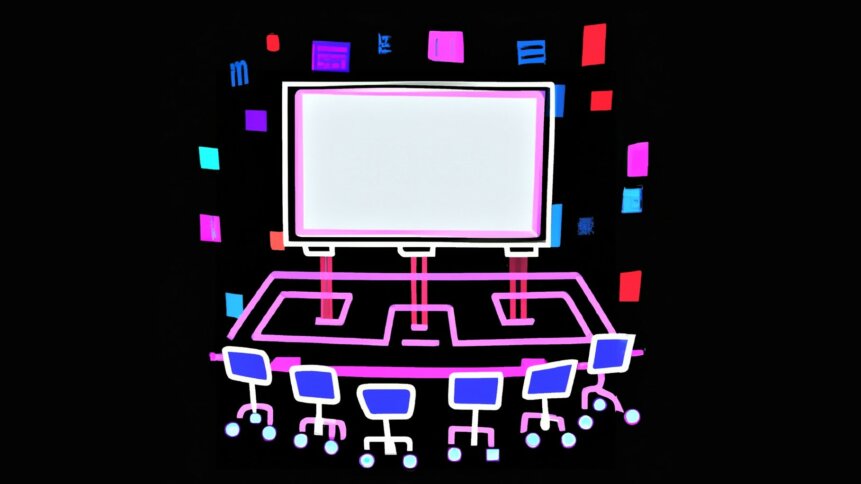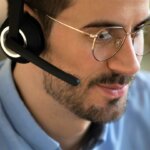Remote work tech adds conference room benefits to hybrid setup

|
Getting your Trinity Audio player ready...
|
• Automated webcams improve remote work meeting experience
• Optical sensors can highlight whiteboard content
• Linked cameras provide seamless coverage in large boardrooms
Web-based tools have made it easy to share information and collaborate on documents, spreadsheets, and other business applications. But there are still scenarios where the remote work audience can miss out on the in-person experience. And one of the biggest challenges for those dialing in is trying to keep track of what’s happening in busy conference room meetings.
Video conferencing tools have evolved rapidly and are capable solutions for one-on-one interactions thanks to screen sharing and headsets that clarify the conversation for participants. But those setups fail miserably in a boardroom setting. Placing a conventional webcam or a laptop at the top of the table makes for mixed results and puts remote workers at a major disadvantage compared with those in the room.
Hybrid and remote working allows companies to recruit talent from anywhere, but if firms can’t make the most of those skills and ideas, then the rewards will fall short of expectations. Companies miss out on valuable insights and comments from participants joining online when conversations in the physical conference room are hard to hear and if in-person interactions are off-camera or poorly framed. But Owl Labs – headquartered in Boston, US – is on a mission to change that.
Competing on the best experience
Co-founders Mark Schnittman and Max Makeev had a eureka moment when seeing how meeting dynamics improved when a laptop was put on a swivel stool. And both knew that automation and software could make the experience even more interactive – fusing smart algorithms with readily available cameras and sensors developed for smartphones and other consumer devices.
By 2016 the duo, who had met as employees at iRobot, had their first prototype 360-degree camera, mic, and speaker device dubbed the Meeting Owl. And today, more than 150,000 organizations use Owl Labs technology to maximize the opportunities of remote work and make the goal of being able to work from anywhere a reality.
Placed on the conference table at the in-person venue, the Meeting Owl gives remote workers a 360-degree banner display of everyone in the room. And to make interactions face-to-face, separate camera views focus on active speakers based on algorithms that respond to motion, vision, and voice signals.
Cleverly, two Meeting Owls can be paired, turning larger, harder-to-capture business discussions into a well-produced TV show experience for remote workers joining online. “You go from watching a bad movie to something that’s more engaging,” Max Makeev – Owl Labs Chief Development Officer – told TechHQ.
Edtech opportunity
Makeev and his colleagues have worked hard to create the best experience for people inside and outside of the room. And the technology isn’t just for business meetings, it’s proven to be a valuable edtech tool as well. Education providers have been quick to realize how useful the meeting technology could be to improve the remote study experience for students.
“The Meeting Owl follows the teacher to the whiteboard, enabling hybrid learning,” Makeev comments. “It gives that feeling of being connected.” One of Makeev’s proudest moments was seeing how the technology improved the study experience for an immune-compromised student who had to isolate from their classmates. Thanks to the setup placed in the classroom, they were still able to see and hear the teacher and other students clearly and participate remotely.
A new addition to the remote work tech line-up is a whiteboard camera that integrates with the meeting technology to make the writing and drawings pop for online participants. Makeev demoed the kit, which is activated by rotating a QR code – one of two, placed on a regular whiteboard to mark out the physical area for the optical sensor.
Best view for everyone
With a regular webcam, whiteboard interactions – that may not be in the shot or in focus – are often lost to remote workers. Instead, staff joining online will likely have to rely on an in-person colleague sending a photo of the final visuals when it may be too late for their ideas to affect the outcome. But having a dedicated whiteboard camera changes that and makes annotations crystal clear, rendering pen strokes and coloring digitally on-screen.
Remote work isn’t disappearing. In fact, the Owl Labs annual ‘State of Remote Work Report’ – a collaboration with Global Workplace Analytics – found that the number of workers choosing to work remotely in 2022 was up 24% on the previous year. And staff with hybrid work schedules had risen by 16%. The trend is clear, and with two-thirds of employees questioned saying that they would immediately start looking for a job with more flexibility if the ability to work from home was taken away, remote work isn’t about to disappear.
Companies that will benefit the most will be those that have meeting technology that delivers the best experience to participants regardless of where they may be. And technology from Owl Labs and other providers is shrinking the gap between being in the office and working remotely.











